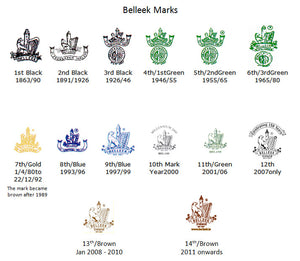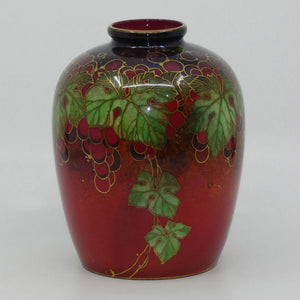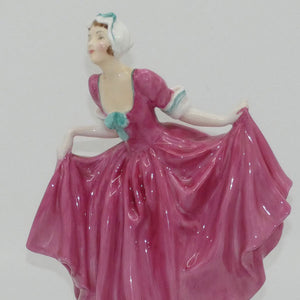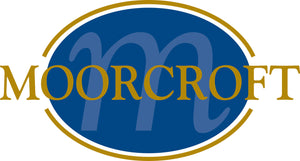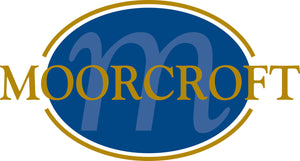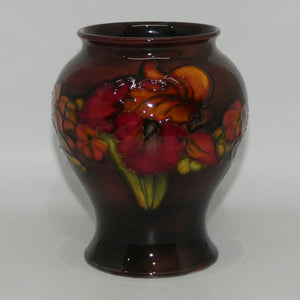William Moorcroft | Master in Pottery | 1897 - 1945

(a very brief summation of) William Moorcroft, Potter to the Queen via Royal Warrant, Born Burslem, Stoke on Trent (1872 - 1945)
After a period of study at the National Art Training School (later known as the Royal College of Art) in 1897 William Moorcroft obtained his Art Masters certificate, which would have enabled him to earn a living by teaching - but he had his heart set on a career as a potter.
The opportunity to realise this ambition arose in commencing employment with James MacIntyre and Co Burslem.
William Moorcroft Pottery is decorated entirely by hand, with the design outlined in trailed slip using a technique known as tubelining. One of William Moorcroft's early designs, named Florian Ware was a great success and won him a gold medal at the World's fair, the St. Louis International Exhibition in 1904. Unusually at that time, he adopted the practice of signing his name, or his initials, on nearly all the pottery he designed, the production of which he personally oversaw.
In due course the extent to which his success had overshadowed MacIntyre's other manufacturing activities resulted in resentment on the part of his employers, culminating in their decision in 1912 to close down his studio (as the factory space was to be allocated elsewhere). William continued at James MacIntyre and Co until 1913, when the company W Moorcroft Ltd was formed with William producing his wares under his own name (and the company continues producing pottery to this day).
In 1913, William Moorcroft set up his new factory at Cobridge with staff from MacIntyres, and backed by a financial arrangement with Liberty & Co of London.
The business succeeded. Much of the output was sold through Liberty & Co and Tiffany in New York City. In 1928 Queen Mary made him Potter to the Queen through a Royal Warrant, which was stamped on the pottery. His son, Walter joined the company when he was twenty, and took over the management of the pottery in 1945 just before William's death.
Some of Williams most recognized patterns are fruit and broad leaf florals like Pomegranate, Pansy and Anemone, and Landscapes like Moonlit Blue, Eventide, Claremont and Dawn.
Decades after, both William and his son, Walters, designs continue to captivate collectors hearts and minds worldwide.
If you are interested in learning about William Moorcroft, signatures, marks and base stamps these books currently in stock are essential reading for the Moorcroft Collector and Connoiseur:
Moorcroft 1897 - 1993 New Edition | Paul Atterbury - see it here
William Moorcroft Behind the Glaze | Neil Swindells - see it here
If you are interested in purchasing or selling William Moorcroft Pottery, visit the dedicated William Moorcroft section on our website
If you need further information we would welcome your phone or email enquiry - more details on our Contact page
After a period of study at the National Art Training School (later known as the Royal College of Art) in 1897 William Moorcroft obtained his Art Masters certificate, which would have enabled him to earn a living by teaching - but he had his heart set on a career as a potter.
The opportunity to realise this ambition arose in commencing employment with James MacIntyre and Co Burslem.
William Moorcroft Pottery is decorated entirely by hand, with the design outlined in trailed slip using a technique known as tubelining. One of William Moorcroft's early designs, named Florian Ware was a great success and won him a gold medal at the World's fair, the St. Louis International Exhibition in 1904. Unusually at that time, he adopted the practice of signing his name, or his initials, on nearly all the pottery he designed, the production of which he personally oversaw.
In due course the extent to which his success had overshadowed MacIntyre's other manufacturing activities resulted in resentment on the part of his employers, culminating in their decision in 1912 to close down his studio (as the factory space was to be allocated elsewhere). William continued at James MacIntyre and Co until 1913, when the company W Moorcroft Ltd was formed with William producing his wares under his own name (and the company continues producing pottery to this day).
In 1913, William Moorcroft set up his new factory at Cobridge with staff from MacIntyres, and backed by a financial arrangement with Liberty & Co of London.
The business succeeded. Much of the output was sold through Liberty & Co and Tiffany in New York City. In 1928 Queen Mary made him Potter to the Queen through a Royal Warrant, which was stamped on the pottery. His son, Walter joined the company when he was twenty, and took over the management of the pottery in 1945 just before William's death.
Some of Williams most recognized patterns are fruit and broad leaf florals like Pomegranate, Pansy and Anemone, and Landscapes like Moonlit Blue, Eventide, Claremont and Dawn.
Decades after, both William and his son, Walters, designs continue to captivate collectors hearts and minds worldwide.
If you are interested in learning about William Moorcroft, signatures, marks and base stamps these books currently in stock are essential reading for the Moorcroft Collector and Connoiseur:
Moorcroft 1897 - 1993 New Edition | Paul Atterbury - see it here
William Moorcroft Behind the Glaze | Neil Swindells - see it here
If you are interested in purchasing or selling William Moorcroft Pottery, visit the dedicated William Moorcroft section on our website
If you need further information we would welcome your phone or email enquiry - more details on our Contact page
- Robert Neilsen

